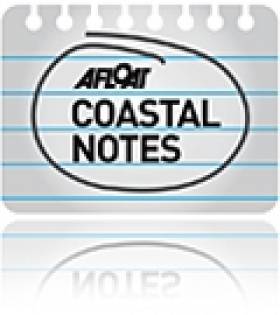Displaying items by tag: Seafront Memorials Tour
#SummerOfHeritage - As previously reported the annual Summer of Heritage events programme organised by Dun Laoghaire-Rathdown County Council (DLRCoCo) started last week.
Running over five days a week until 7 September, the programme this year has some added new and exciting venues for you to see, visit and learn from and for free!
All tours are non-pre booking and places are limited so turn up early!
The events which drew thousands of people last year and to look forward to in 2014 are the various heritage sites across the county and among them are the guided Seafront Memorial Tours held in Dun Laoghaire Harbour.
DETAILS: The first date of these guided walking tours (again no pre-booking) starts tomorrow Sunday, 6 July.
Location: at the Queen Victoria Fountain, Dún Laoghaire.
Descripstion: The tour covers coastal memorials along the harbour waterfront, including the Queen Victoria Fountain, George IV Memorial, the mailboat Leinster's anchor, Christ the King, the Crimean War Cannon and the 1895 Lifeboat Disaster.
Tours: (every Sunday) from 6 July until 7 September
Time: 11.30am (1 tour per day)
Tour: 60 minutes
Max capacity: 20 people
Wheelchair accessible.
This is an outdoor event.
For further details of the full programme download programme HERE for details of locations, dates and times. Or visit: www.dlrevents.ie Contact: (01) 204 7011
Seasonal Finale to Seafront Memorial Tours
#SeaFrontTours–The final Seafront Memorials Tour of the season ends this Sunday (1 September) in Dun Laoghaire Harbour and from where the waterfront is lined with historical landmarks.
Dun Laoghaire-Rathdown County Council which organises the free historical tours that have been running for six years as part of the Summer of Heritage Programme.
The free 1-hour tour starting at 11.30am covers coastal memorials to include the Queen Victoria Fountain, George IV Memorial, the mailboat R.M.S. Leinster's anchor, the Crimean War Cannon and the 1895 Lifeboat Disaster.
Tours start at the Queen Victoria Fountain (close to DART station) in Dún Laoghaire and the maximum number of people for each tour is 20 persons.
The outdoor event is also wheelchair accessible. No pre-booking is required and places are limited so it is advisable to turn up early.
For information Tel: (01) 204 7011 or visit www.dlrevents.ie/heritage2013.html
#SeaFrontTours–This year's Seafront Memorials Tour season starts this Sunday (30 June) in Dun Laoghaire Harbour where the waterfront is lined with historical landmarks.
Dun Laoghaire-Rathdown County Council which organises the tours are delighted to announce the historical walks which are now in the sixth year of the Summer of Heritage Programme.
During its first five years Summer of Heritage has attracted over 20,000 visitors and been nominated for the Excellence in Local Government Award. This unique event opens up some of the County's finest heritage sites to the public free of charge.
Tim Carey, the Council's Heritage Officer, said, 'The idea of Summer of Heritage is to open people's eyes to what is on their doorstep. These are heritage sites that people may frequently pass as they go about their daily business but be completely unaware of their significance or its 'story'. This year we have expanded the programme considerably. With 15 different attractions Summer of Heritage is bigger and better than ever.'
The free 1-hour tour starting at 11.30am (held once every Sunday until 1 September) covers coastal memorials to include the Queen Victoria Fountain, George IV Memorial, the mailboat R.M.S. Leinster's anchor, the Crimean War Cannon and the 1895 Lifeboat Disaster.
Tours start at the Queen Victoria Fountain (close to DART station) in Dún Laoghaire and the maximum number of people for each tour is 20 persons.
The outdoor event is also wheelchair accessible. No pre-booking is required and places are limited so it is advisable to turn up early.
For information Tel: (01) 204 7011 or visit www.dlrevents.ie/heritage2013.html
Take a Stroll with a Dún Laoghaire Seafront Memorial Tour
#SEAFRONT TOURS – Take in the sea-air while getting to know some historical landmarks, along Dun Laoghaire Harbour's waterfront with the Seafront Memorials Tour. The free guided tour runs every Saturday morning until the 1 September.
The tours take in all the coastal memorials to include the Queen Victoria Fountain, George IV Memorial, the mailboat R.M.S. Leinster's anchor, the Crimean War Cannon and the 1895 Lifeboat Disaster.
The tours start at 11.30 am (1 tour on each Saturday) and they take approximately 1 hour. The maximum number of people for each tour is 20 persons, noting the outdoor event is also wheelchair accessible. No pre-booking is required and places are limited so it is advisable to turn up early.
The tours are part of the 'Summer of Heritage' programme which is now in its fifth year organised by Dun Laoghaire-Rathdown County Council. For information call: (01) 254 2387 or visit: www.dlrevents.ie/heritage.html
Take a stroll along Dún Laoghaire with the Seafront Memorials Tour
#SEAFRONT TOURS – Now that the bad weather that covered half of the country is behind us, the forecast at least for Dublin and next Saturday is more promising. So why not consider taking a stroll with the sea-air along the waterfront in Dun Laoghaire Harbour and learn some local history by taking a Seafront Memorials Tour. The free guided tour runs every Saturday morning until the 1 September.
The tours take in all the coastal memorials along the harbour's waterfront including the Queen Victoria Fountain, George IV Memorial, the mailboat R.M.S. Leinster's anchor, the Crimean War Cannon and the 1895 Lifeboat Disaster.
The tours start at 11.30 am (1 tour on each Saturday) and they take approximately 1 hour. The maximum number of people for each tour is 20 persons, noting the outdoor event is also wheelchair accessible. No pre-booking is required and places are limited so it is advisable to turn up early.
The tours are part of the 'Summer of Heritage' programme which is now in its fifth year organised by Dun Laoghaire-Rathdown County Council. For information call: (01) 254 2387 or visit: www.dlrevents.ie/heritage.html




























































